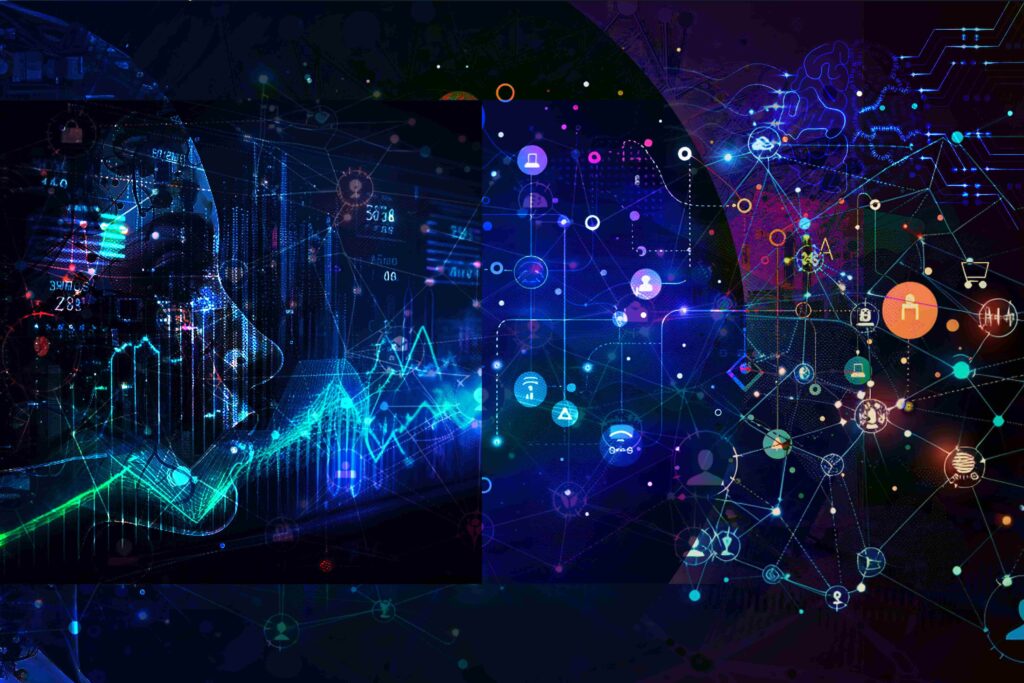The Rise of Graph Foundation Models: How Large Language Models are Revolutionizing GML
Jul. 04, 2024. 4 min. read.
1 Interactions
Explore how merging Graph Machine Learning with Large Language Models creates Graph Foundation Models, enhancing our ability to analyze interconnected data for advanced applications in various domains.
The world around us is inherently interconnected. Social networks connect people, molecules form chemical compounds, and knowledge graphs organize information. Capturing these relationships is crucial for various tasks, from drug discovery to recommender systems. This is where Graph Machine Learning (GML) comes in. GML excels at analyzing these interconnected structures, called graphs, to extract insights and make predictions.
Despite its strengths, traditional Graph Machine Learning (GML) struggles with limited data and diverse real-world graphs. Large Language Models (LLMs), on the other hand, excel at learning complex patterns from massive amounts of text data. This exciting convergence paves the way for Graph Foundation Models (GFMs), a promising new direction that merges GML’s graph processing with LLMs’ language understanding, potentially revolutionizing how we handle complex data.
Graph ML has progressed from traditional algorithms to advanced models like Graph Neural Networks (GNNs) that learn representations directly from graph data. This evolution has set the stage for integrating LLMs to further enhance Graph ML’s capabilities, providing new methods to handle large and complex graph structures.
LLMs can significantly augment Graph ML by leveraging their superior language understanding capabilities. Techniques such as prompt-based learning, where LLMs are given graph-related tasks, show great promise.
The Power of LLMs in Graph Learning
LLMs bring several advantages to the table:
- Improved Feature Quality: LLMs can analyze textual descriptions of graphs, extracting rich features that capture the relationships and context within the data. This can significantly improve the quality of features used by GML models, leading to more accurate predictions.
- Addressing Limited Labeled Data: Labeling data for graph tasks can be expensive and time-consuming. LLMs can leverage their pre-trained knowledge to learn from unlabeled graphs, alleviating the need for vast amounts of labeled data.
- Tackling Graph Heterogeneity: Real-world graphs come in all shapes and sizes, with varying densities and node/edge types. LLMs, with their flexible learning capabilities, can potentially adapt to this heterogeneity and perform well on diverse graph structures.

Graphs Empowering LLMs
The benefits are not one-sided. Graphs can also empower LLMs by providing a structured knowledge representation for pre-training and inference. This allows LLMs to not only process textual data but also reason about the relationships within a graph, leading to a more comprehensive understanding of the information.
Applications of LLM-Enhanced GML
The potential applications of LLM-enhanced GML are vast and span various domains:
- Recommender Systems: Imagine a recommender system that not only considers your past purchases but also understands the relationships between different products based on reviews and product descriptions. LLM-enhanced GML can achieve this, leading to more personalized and accurate recommendations.
- Knowledge Graphs: Knowledge graphs store information about entities and their relationships. LLMs can improve reasoning and question answering tasks on knowledge graphs by leveraging their understanding of language and the structured knowledge within the graph.
- Drug Discovery: Molecules can be represented as graphs, where nodes are atoms and edges are bonds. LLM-enhanced GML can analyze these graphs to identify potential drug candidates or predict their properties.
- Robot Task Planning: Robots need to understand their environment to perform tasks. By integrating scene graphs (representing objects and their spatial relationships) with LLMs, robots can generate more efficient and safe task plans.
Looking Forward: Challenges and Opportunities
While the potential of LLM-enhanced GML is exciting, there are challenges to address:
- Generalization and Transferability: Can models trained on one type of graph perform well on another? Future research needs to focus on developing models that generalize across different graph domains.
- Multi-modal Graph Learning: Many real-world graphs contain not just text data but also images and videos. Research on incorporating these multi-modal data formats into LLM-enhanced GML is crucial.
- Trustworthy Models: Ensuring the robustness, explainability, fairness, and privacy of LLM-enhanced GML models is essential for their responsible deployment in critical applications.
- Efficiency: LLM computations can be resource-intensive. Developing more efficient LLM architectures specifically tailored for graph tasks is necessary for practical applications.
Conclusion
The intersection of GML and LLMs opens a new chapter in graph learning. By combining the strengths of both approaches, GFMs have the potential to revolutionize various fields that rely on analyzing interconnected data. While challenges remain, ongoing research efforts hold the promise of unlocking the full potential of this exciting new direction.
Let us know your thoughts! Sign up for a Mindplex account now, join our Telegram, or follow us on Twitter.

.png)

.png)


.png)

0 Comments
0 thoughts on “The Rise of Graph Foundation Models: How Large Language Models are Revolutionizing GML”